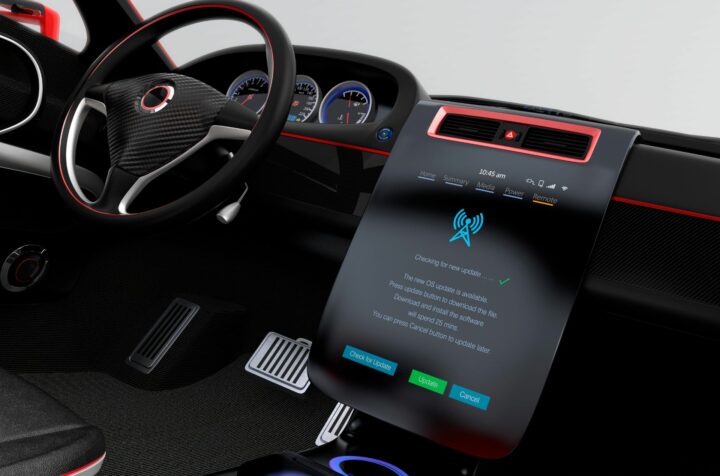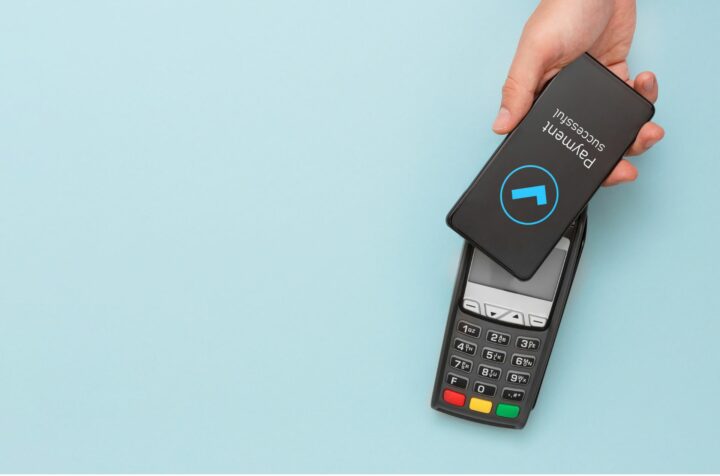The opportunities and challenges affecting smart device manufacturers and why every part of their connected solutions matters.
When you think of smart connected devices, it’s easy to forget the device.
It’s all about the internet, the app, the cloud, the platforms, 5G, Wi-Fi 6, deep learning, mesh networks, and the dozens of other software and connectivity technologies that power today’s Internet of Things (IoT). Even when someone is holding their smartphone, they’re likely only worried about the functionality of the app. The device is taken for granted.
Physical devices deserve more recognition. Especially seeing that the world’s first internet-connected device was a humble soda machine in Pittsburg, Pennsylvania in 1982. Able to report on the number and temperature of the cans it contained, the machine was connected to the ARPANET, a precursor of today’s internet. And in the end, it was the device and what it delivered that truly mattered to its users.
Importantly, it was to become the first connected device of billions.
But 40 years ago, the very thought of such a connected world would’ve been science fiction. It wasn’t until 2008 and 2009 that the number of connected devices outnumbered the people using them (in 2011, the Cisco Internet Business Solutions Group said those years were the true birth of the Internet of Things).
Barely two decades later, the IoT industry is worth more than US $380 billion with the international IoT market revenue expected to reach over US $1 trillion by 2030. That same year, it’s estimated that connected devices will number nearly 30 billion – a good 4 devices for every person.
The potential is limitless. Especially as the industry is quickly diversifying, as noted by McKinsey Digital, which defined nine different IoT areas that are currently driving value:
- Human: Wearable and ingestible devices
- Home: Security systems and controlling devices
- Retail environments: Inventory optimization, self-checkout
- Offices: Energy management, improved productivity
- Factories: Operating efficiencies, optimizing equipment use
- Worksites: Predictive maintenance, health and safety
- Vehicles: Condition-based maintenance, pre-sales analytics
- Cities: Adaptive traffic control, resource management
- Outside: Connected navigation, shipment tracking.
The list also matches up with IOT Analytics data of 1600 publicly announced enterprise IoT projects, which showed that the global share of projects was in the following IoT segments: Smart City (23%), Connected Industrial (17%), Connected Building (12%), Connected Car (11%), Smart Energy (10%), Other (8%), Connected Health (6%), Connected Supply Chain (5%), Smart Agriculture (4%), and Smart Retail (4%).
IoT isn’t just expanding into new segments. In various areas, it’s also becoming more specialized. As seen with Industrial IoT (within Industry 4.0) and the Internet of Medical Things.

Everything will get connected. Big trends in IoT. Image © Pixabay
What’s trending? Sustainability and IoT.
From energy optimization to environmental monitoring, IoT devices stand to be a useful tool to mitigate climate change, and be at the forefront of what the European Commission has dubbed Industry 5.0.
Sensors can be used to monitor water usage, check air pollution, and even help reduce waste (for example, sensor-enabled bins can tell authorities when they’re near capacity, which means trucks can be used more efficiently).
For device manufacturers, this presents a vast number of opportunities, and in the coming years, it’s hard to imagine any country, industry, or individual that won’t be affected by such connectivity. Especially as hardware technologies continue to evolve. For example, IOT-Analytics’ Emerging IoT Technology Report 2022 found the following hardware technologies to watch:
Those nearing maturity, such as Tiny Machine Learning, Edge Data Centers, Chiplets, Micro Data Centers, AR technology, and cloud-connected sensors. Those that show promise in coming years, from wireless, battery-free sensors, ML-optimized gateways, neurosynaptic chips, and Quantum Random Number Generator chips. Then to technologies we’ll see more of in the future, including quantum computing and biodegradable sensors.
Ultimately, the only limit for manufacturers will be their imaginations.
But for all the opportunities, there are many challenges to successfully developing a connected device that, often, must appeal to diverse people in a range of environments.
Rise to the challenge
On an organizational level, a report from Beecham Research noted four significant challenges that result in an IoT project’s failure. Business aims not thought out, company organizational issues, technological problems not foreseen, and customer/vendor problems.
Which makes it clear that you need to set clear objects, involve your entire company, do your research about the technologies you want to use/might have to use, and ask for help if you need it.
Move further down to the actual IoT device, however, and things start to get much more complex. At every stage of development, getting one building block wrong can bring down the entire project.

Image © Pixabay
Let’s look at five of the challenges when developing smart connected devices.
Where the device operates
Inside. Outside. Traveling in a car. Placed on the body. Freezing weather. Hot climate. Wet. Dry. There are multiple concerns when it comes to where a device is located. Cold can negatively affect your device’s battery. If it’s too hot your device may overheat. Heavy rain may hinder transmissions. The device may need to be installed where it is susceptible to theft. Regions may have substantially different levels (and quality) of internet access.
The issues with any device can be as varied as the very environment it’s used – and some environments are certainly more challenging. A factory floor will see more rough handling than a hospital. Taking care to thoroughly test your device in a range of environments and usage scenarios is essential to ensuring its usability and functionality.
Consider smart clothes. The Levi’s Trucker Jacket with Jacquard by Google places the Jacquard device in the sleeve of the jacket, which enables the wearer to use a variety of gestures to interact with their phone (screen calls, change the music volume, etc.). The device must be able to connect and work in a range of conditions, be constantly moved, seamlessly connect with your device, and yet be sensitive enough to feel the gestures through the jacket’s material. Then look at the Neviano swimsuit, which is integrated with a UV sensor that alerts the wearer when UV levels are high so they can apply more sunscreen or get under some shade. Designed to look like a fashionable medallion, the intelligent sensor can withstand heat, (potentially) sand, and water.
What’s trending? It’s 5G on the line.
Within the next couple of years, 5G will quickly move from being a ‘consumer only’ technology, to one that boosts IoT devices by improving their connectivity, speed, and reliability.
Whether your device operates on a factory floor, helps workers automate tasks, or is connected to your own private 5G wireless network – as Nokia has done in Wolfsburg, Germany – the pure processing power and data transfer speeds of 5G will see IoT innovations rapidly enter the market.
Security and privacy
Data security is an understandable concern for users of smart devices, whether individual consumers or businesses. But the multi-layered complexity of a device’s security means that all avenues of potential attack must be assessed and rigorously tested, which includes the device’s hardware, software, communications, platforms, and cloud security.
This can include looking at how well the device integrates with specific data platforms, whether access controls are correct, that every path of attack (each connection) is thoroughly checked, and if the device is open to physical attack (which can mean either damage to the system and/or someone gaining access to data).
It’s also essential to ensure that any application’s vulnerabilities are found and that it isn’t open to DDoS attacks. Are updates regularly done? Is your password strong enough? Is it mandatory to set up a password? Is it easy and obvious how a user can change one?
This is where real-world IoT device testing can make a stark difference. By placing the device in the hands of actual users, it’s possible to gain deep and unbiased insights into security issues that are difficult to replicate in-house.
For an interesting look into what could happen with a coordinated attack on multiple connected devices, have a look at this recent Princeton University Research, which discussed the potential of hackers doing a lot more than changing the temperature of your house. By gaining control of hundreds or thousands of high-wattage networked devices, cyber-criminals could potentially launch a coordinated attack (that they term manipulation of demand via IoT) to shut down the power grid.
While the likelihood of it ever happening, much less succeeding is slim, it does highlight the new vulnerabilities that such connected devices (with often little if any security protections) are creating.
Regulations
Such security concerns are resulting in increased regulations around connected devices. In 2018, Gartner reported that “20 percent of organizations observed at least one IoT-based attack in the past three years”, which they felt would ultimately lead to regulatory compliance becoming the prime influencer for IoT security uptake by 2021. They weren’t wrong.
Cyber-security issues have already led to a variety of guidelines, including the US’s National Institute of Standards and Technology’s (NIST) Foundational Cybersecurity Activities for IoT Device Manufacturers, which “describes recommended activities related to cybersecurity that manufacturers should consider performing before their IoT devices are sold to customers” and the European Telecommunications Standards Institute’s (ETSI) guide on Cyber Security for the Consumer IoT segment (ETSI EN 303 645), which “specifies high-level security and data protection provisions for consumer IoT devices that are connected to network infrastructure.”
As new standards and, increasingly, legally binding regulations appear both regionally and globally, becoming compliant will become more difficult, complex, and time-consuming. Particularly if you’re dealing with different regulations between countries.
Not only will this require constant monitoring and updates to bring your solution in line with changing regulations, but it will also require ongoing IoT software testing.
Connectivity
When it comes to the transfer of data, reliable and fast connectivity is essential. But a variety of things can affect its performance once connected to the internet. Proxy servers, firewalls, technologies that aren’t compatible, different routers, gateways, regions with no broadband, lack of cell towers, applications, and more.
Then consider the type of connectivity your device uses. Bluetooth, Wi-Fi, wireless cellular communication, satellite, Ethernet, etc. Each has its challenges and benefits.
What connected seamlessly in the lab may have considerable difficulty out in the real world. And if you’re developing hundreds (if not thousands) of connected devices, the problems can add up very quickly.
Things to consider when deciding on, or testing, your connectivity, include:
- Signaling: It’s important to make sure that dependable and uninterrupted bi-directional signaling is used and checked, especially regarding the collection and routing of data.
- Security: Give thought to any open ports and ensure there is proper encryption and authorization.
- Power: The type of battery your device uses can make a dramatic difference. It should have the lowest possible self-discharge current, have optimal cell voltage, be right for the device (rechargeable or one-time use), and if rechargeable, have a decent amount of charge cycles.
What’s trending? Hands-free healthcare solutions.
It’s not surprising that the growth of the Internet of Medical Things quickly expanded during the ongoing coronavirus pandemic. In 2021, 64% of broadband US households reported using such telehealth and digital device services and that “passive continuous monitoring solutions and new technology such as artificial intelligence will be critical to communications between providers and patients.”
From wearables that monitor a variety of health conditions, such as abnormal heart rhythms, diabetes, and asthma, to an IoT medical device that performs self-maintenance, the benefits of IoT to healthcare are immense.
It will make healthcare more accessible and provide healthcare professionals with invaluable data. When combined with 5G, Artificial Intelligence, and Big Data, IoT is set to revolutionize modern healthcare.
Design-specific issues and usability
Unlike smartphones, which seem to be growing in size every year, the trend for connected devices is to be smaller and lighter. For device designers, this has the obvious challenge of creating a device that is not only energy-efficient, easily manages data, and supplies exceptional performance, but is also stable, always connected, and robust enough to deal with real-world conditions. And looks great.
But there’s always more. Is its design easy to use? Does it encourage user interaction and provide a positive user experience?
Testbirds insight!
Speaking of small, one interesting technology that’s helping developers produce such powerful, yet ever-smaller devices are flexible printed circuit boards.
Could be worth checking them out.
This is resulting in design engineers having to consider the 5 C’s:
- Connectivity – that it connects to other devices, cloud, etc.
- Continuity – that it has extended battery life.
- Compliance – that your device meets standards and regulatory requirements.
- Coexistence – that it can work alongside / harmoniously with other connected devices in increasingly busy IoT environments.
- Cybersecurity – that data, and as much as possible the physical device, is safeguarded.
However, from an overall software testing perspective, it would also be a clever idea to start considering a sixth C.
Customer experience.
The device’s design may incorporate everything to function as intended but if it’s not usable or delivers a negative experience, it simply won’t be used.
Left to your own devices
As mentioned before, every part of a smart device is essential. When one part fails, it all fails. Whether it’s as simple as not supplying proper documentation to the user or using a battery that can’t go the distance, it all has to work together seamlessly.
It is essential to ensure the device works as intended, that security vulnerabilities are minimized, and that it can be easily updated when needed. And that requires IoT testing. Being able to release a solid product that people trust, is a clear competitive advantage.
This also means taking products out of the lab and looking closely at the device’s resilience to failure when used in a wide range of operating environments, under different usage scenarios, and with diverse users.
Testbirds insight!
Real-world IoT testing is also a terrific way to help figure out the true result of any malfunction, which is vital as such causes can now be much harder to identify. If your device remotely opens and closes a gate, what is the actual reason the gate isn’t closing? Is it your device? An electrical issue with the gate? A weak battery or connection? Is something physically blocking the gate?
Real-world IoT testing with real people can make a true difference and ensure that your device is usable, useful, and – most importantly – used.








